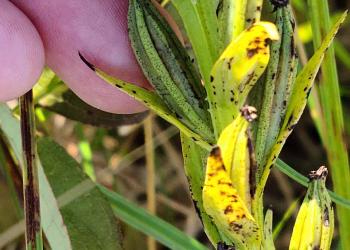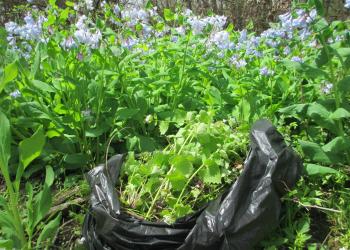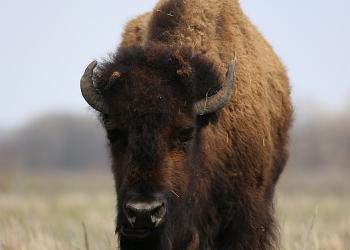Natural Resources
Restoring Midewin National Tallgrass Prairie
What is a Grassland?
All of the continents except Antarctica contain some type of grassland, with grasslands covering one quarter of the earth's surface. While grasses dominate all grasslands, grasslands in different locations vary considerably from one another.
There are three types of prairie in North America: tallgrass prairie, mixed prairie, and shortgrass prairie.
In the tallgrass prairie, which receives the most rainfall, the prairie grasses can be over five feet high. Moving westward, the amount of annual precipitation decreases, and tallgrass prairie transitions to mixed prairie, with grasses between two and four feet. In the rain shadow of the Rocky Mountains, the shortgrass prairie, also known as the plains, supports grasses that are less than two feet tall.
While the tallgrass, mixed, and shortgrass prairies contain different plant communities, they do share some characteristics:
- They generally exist on flat or rolling terrain with soils that are rich in organic matter, slightly alkaline, and very fertile.
- Precipitation, averaging between 10 and 39 inches annually, is concentrated in peak periods, interspersed with drought. Great fluctuations in rainfall may occur from year to year.
- Wind is an important factor in the climate. Water evaporates, contributing to already arid conditions. Wind also contributes to the spread of wildfires.
- Fire plays an important role in the grassland ecosystem. Most trees are killed or weakened by fire, but grasses have adapted to survive it and many even grow better after they have been burned.
Midewin and the Tallgrass Prairies
In the United States, the greatest stretch of grassland is the prairie, extending from the Appalachians in the East to the Rocky Mountains in the West. Though very little of the North American tallgrass prairie remains, it once covered the Midwest, parts of Iowa and Minnesota, and the eastern edges of Kansas, Nebraska, South Dakota, and North Dakota, from which it extended northward into Canada.
The eastern part of the tallgrass prairie, most of Iowa, Missouri, Illinois, parts of Indiana, and little pieces of Ohio, was actually a mix of prairie and forest.
In parts of the eastern tallgrass area, islands of prairie ranging between one and twenty miles in diameter were surrounded by forest. In other sections, islands of forest were surrounded by prairie. In yet other places, islands of savanna (grassland with scattered trees) were surrounded by forests. The forests were different, however, than the forested areas of the eastern United States, which were dominated by beech and maples. The forests of the eastern tallgrass prairie tended to be dry and were made up mainly of oaks and hickories. The boundaries of the forest and prairie areas were not absolute. If the climate was dry for several years, the smaller oak trees would die and grasses would take over. During a series of wet years, oak seedlings would become established in the grasslands, and the forest would expand a bit.
The presence of both prairie and forest and the intermingling of these two habitats resulted in a great diversity of animal life. Most of the animal species found in the tallgrass prairie were also found in the eastern forests, although a few species were unique to the tallgrass prairie.
Restoring Midewin
Like most of Illinois, very little of Midewin consists of natural tallgrass prairie anymore. Scattered remnants, totaling less than 200 acres, or 3% of Midewin’s acreage, is all that is left. To restore the remainder of Midewin’s nearly 20,000 acres to tallgrass prairie and other native habitats will take considerable time and plant materials.
Just leaving the land alone will not result in a return of the native grasses and wildflowers; instead, it will grow up in weedy plants, most not native to this region. It may be decades before the lands at Midewin begin to resemble the prairies once found in Illinois.
Because it has large open grasslands that have been maintained as pasture lands for decades, Midewin provides habitat for a rich diversity of plants and animals, despite many years of Arsenal production and intensive agriculture.
Over one hundred bird species nest and breed at Midewin, and an additional 68 bird species utilize habitat at Midewin during migration or as winter range. Midewin is also home to 27 mammal species and 53 fish species. The diversity of plants includes over 600 plant species identified so far, including a number of invasive and non-native plant species.
The continuing management challenge at Midewin is to maintain the different habitat structures preferred by different grassland bird species. The habitat condition for both plants and animals is dependent on the careful management of the prairie vegetative communities. Native seed gardens have been established to supply needed native prairie and grass seed for restoration in the coming years.














